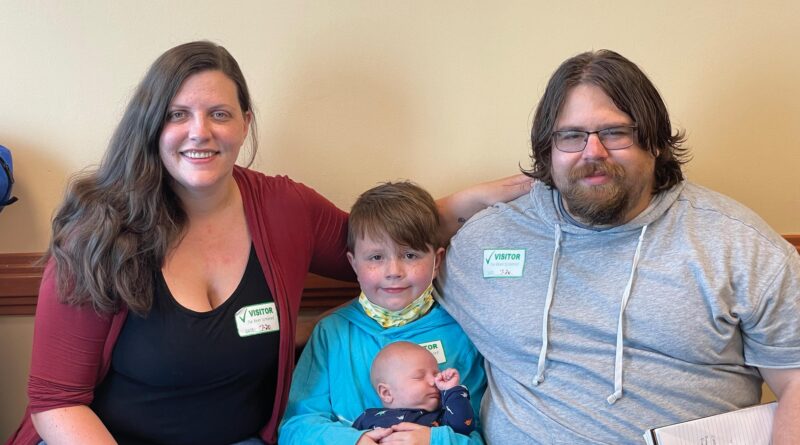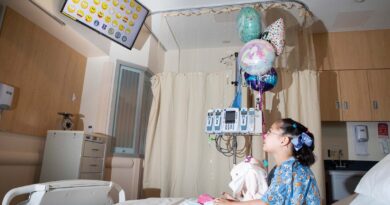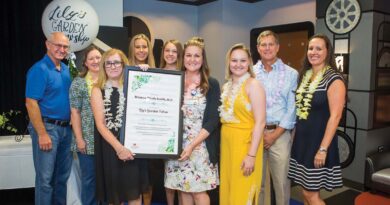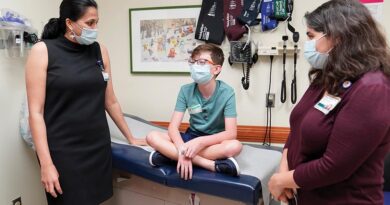Clinics created to treat children with genetic disorders
Published on March 17th, 2022 by Nancy Humphrey.

Theodore Gray was born on May 13, 2021, a few weeks early — small, but seemingly healthy. His parents, Amanda and Coty, soon took him home to Waverly, Tennessee, to join big brother Tony, 7, who had prayed for a little brother.
The following week, Amanda was notified from Tennessee’s newborn screening program of the possibility that Theodore had adrenoleukodystrophy (ALD), a genetic condition occurring in about one in 17,000 people that over time damages the myelin sheath, the protective membrane that insulates nerve cells in the brain. Without the myelin sheath, the nerve cells that allow thinking, talking and controlling muscles no longer function correctly. A week later the diagnosis was confirmed.
Newborn screening detects rare and possibly life-threatening diseases that wouldn’t be immediately obvious. Symptoms could be years away. Early detection of ALD and other diseases that have effective interventions can prevent long-term complications or even be lifesaving. The test screens for 69 diseases in Tennessee.
Monroe Carell Jr. Children’s Hospital at Vanderbilt has established clinics for children with ALD and other genetic disorders that are found on newborn screening, including Fabry disease, Krabbe disease and others.
Following the diagnosis, the Grays met with Kevin Ess, MD, PhD, associate professor of Pediatrics, director of the Division of Pediatric Neurology and the Gerald M. Fenichel Professor of Neurology, during their genetic counseling at Children’s Hospital, then in July at a dedicated ALD clinic. This multidisciplinary clinic is a collaboration within Pediatrics between Neurology, Endocrinology, Genetics and Hematology/ Oncology.
“They explained everything on a level we were able to understand,” Amanda said. “I’m in the medical field, but at a lab doing bloodwork, so anything dealing with neurology is so far above our heads. They took our questions, explained everything and gave us hope. If you Google any kind of leukodystrophy, it’s terrifying. The statistics are horrible. To have this team of specialists look at your child and say there’s hope here, that’s comforting.”
The providers participating in the multidisciplinary clinic include Ess from Neurology, Allison Shields, CPNP, MSN, from Genetics; Nidhi Gupta, MD, assistant professor of Pediatrics, from Endocrinology; and Jim Connelly, MD, assistant professor of Pediatrics, from Hematology/Oncology.
“Just organizing an annual visit can be complicated when you’re seeing multiple specialists,” said Elizabeth Hinkley, a clinical research coordinator who coordinates the clinics. “The purpose of the clinics is to streamline care; to make it easier for our patients with these rare diseases so when they come in, they can see almost all of their providers in one visit instead of having to come in three to four times to see different people.”
With ALD the body can’t break down very long-chain fatty acids (VLCFAs), causing saturated VLCFAs to build up in the brain, nervous system and adrenal glands. The most common type of ALD is cerebral X-linked ALD, which affects males much more severely than females, who can carry the disease without any symptoms.
Symptoms from this form of cerebral X-linked ALD usually appear between ages 4 and 10 years and worsen over time.
Gradually, because the disease spreads throughout the brain, the symptoms will grow worse — and could include blindness, deafness, seizures, loss of muscle control and progressive dementia. If not diagnosed early, childhood-onset cerebral ALD will likely lead to death within five to 10 years. There is hope, however, that bone marrow transplants done by Connelly and his team can prevent many of the neurological issues with these patients.




